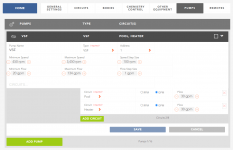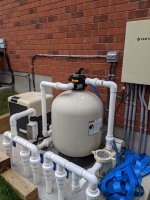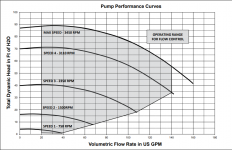DeanP66
0
That might be fine then. They key is to get lots of agitation of the water and lots of bubbles, which creates the outgassing of CO2 (I think) and pushes just the pH up.
With a SWG, you shouldn't have to use that pH+ ever again. The pH will climb on its own over time because you aren't feeding it acidic pucks or granular chlorine. Stick with just aeration so you don't raise your TA along with the pH.
Could you give us a brand new set of current numbers just so we can see where you currently sit. This thread has been going on for quite a while so most of them may not be very valid or accurate anymore.
As far as the SWG, I'd try to keep the FC at 7ppm so you have a little cushion in case of a power outage or who knows what. It will give you a little more time to fix any issue without the pool beginning to get cloudy. Better a couple ppm too high than too low. It really doesn't cost you anything with a SWG like it would with the extra liquid chlorine so really no downside.
With a SWG, you shouldn't have to use that pH+ ever again. The pH will climb on its own over time because you aren't feeding it acidic pucks or granular chlorine. Stick with just aeration so you don't raise your TA along with the pH.
Could you give us a brand new set of current numbers just so we can see where you currently sit. This thread has been going on for quite a while so most of them may not be very valid or accurate anymore.
As far as the SWG, I'd try to keep the FC at 7ppm so you have a little cushion in case of a power outage or who knows what. It will give you a little more time to fix any issue without the pool beginning to get cloudy. Better a couple ppm too high than too low. It really doesn't cost you anything with a SWG like it would with the extra liquid chlorine so really no downside.





